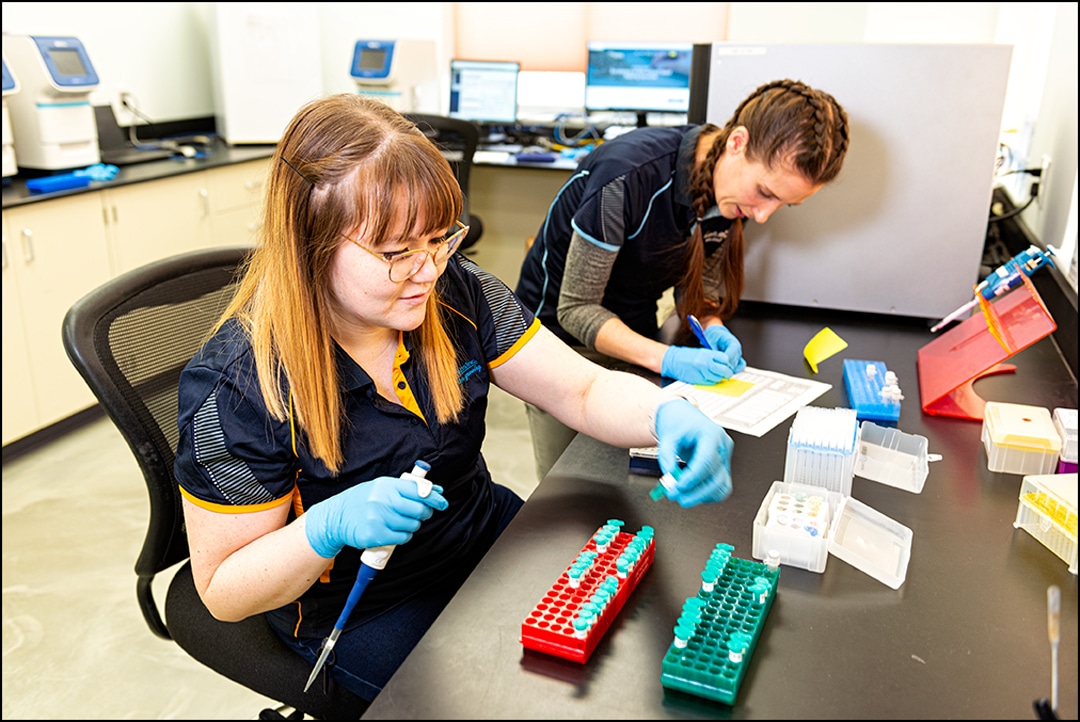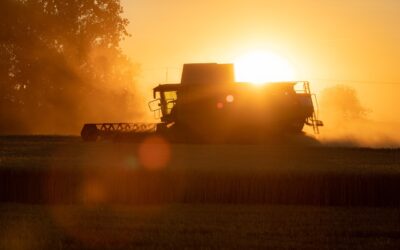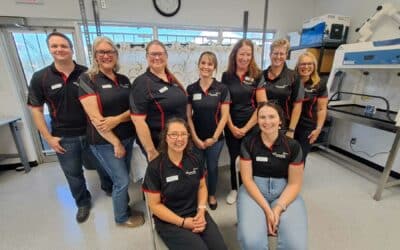Growers have expressed concerns about bacterial blight to us for a couple of years now, asking for a test. The term bacterial blight is a generic one, covering multiple plant diseases caused by bacteria.
Pseudomonas syringae is most often cited as the pathogen involved, but this is a very common environmental bacterium with a wide host range. It’s not a well-defined species and molecular analysis hasn’t been able to differentiate individual pathovars of interest on specific crops. A better candidate for testing is Xanthomonas translucens, the bacteria responsible for Bacterial Leaf Streak (BLS) and Black chaff by infection of tissue and glumes respectively. DNA sequence differences have been identified which are able to collectively identify those X.translucens pathovars that are pathogenic on wheat, barley, rye, and triticale.
20/20 Seed Labs Inc. has been offering testing for Bacterial Leaf Streak (BLS) for three months now. If you sent us a sample, you have probably received a follow-up phone call to discuss your results. Early on in our test validation, we realized that we would likely find many more positives than most would have expected from the number of known disease incidents.
This wasn’t too surprising as X.translucens pv. translucens, the pathogen responsible for BLS on barley, is known to be widespread in cereal-growing regions globally. Closer to home, the EPPO Global Distribution map shows it present in Alberta, Saskatchewan, Manitoba, Quebec, and most American states. Pathogenic presence is already past the point where a published qualitative positive/negative test would have been useful. The challenge now is for us all to figure out how the detected levels relate to the risk of disease developing.
We’ve been calling growers to talk about their individual fields and how the results generated on harvested seed might explain what we are both seeing. Growers have been most generous with their information, with some even sending in additional samples of seed as planted to determine what might have changed over the course of the season.
Environmental conditions, especially water, play an important role in disease development as expected for a bacterial disease. We now have a better sense of what background levels of pathogenic X.translucens pathovars occur on dryland and non-symptomatic fields, and what amounts are seen on seed off of fields with known BLS issues.
We have heard of BLS symptoms disappearing when irrigated water was discontinued, and documented lower levels of detected bacteria compared to otherwise similar fields which were irrigated for longer. We have also been talking to Alberta Agriculture about our methodology and the trends observed.
Following on all our discussions, 20/20 Seed Labs Inc. will be changing our report structure for BLS with the aim of providing growers with documented records of the levels of pathogenic X. translucens found.
- High Level Detection: levels of pathogenic X. translucens pathovars equivalent to those seen in seed coming from fields with BLS symptoms;
- Moderate Level Detection: pathogenic X. translucens pathovars were detected at levels above background levels seen in dry fields but not yet comparable to levels seen from fields with noticeable BLS symptoms. This is an unknown risk level;
- Low Level Detection: Pathogenic X. translucens pathovars detected at low amounts but sufficient to be detected by a known alternate qualitative method. This is considered a low risk background level.
- Trace Detection: Pathogenic X. translucens pathovars detected but not consistently across different test methods. The alternate qualitative method is less sensitive in detection of X.translucens pv. translucens. This is also considered a low risk level.
- Negative Detection: No detection of pathogenic pathovars.
Alberta Agriculture recognizes that we are seeing a more widespread X.translucens presence than originally thought prior to tests becoming available. Seed may be used even if it tests positive, although they recommend using seed lots with as low a positive rating as can be obtained especially if wet conditions are expected. If the crop is grown under irrigation, they further suggest that the canopy be allowed to dry between irrigation events if possible.
Related Articles
The Bacterial Leaf Streak Situation is Evolving
Why Canada’s Going to Need More FHB-Resistant Cereal Varieties






